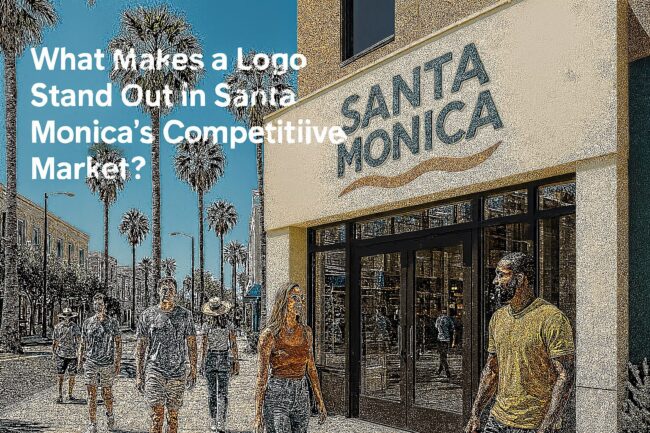How Local Design Decisions Impact Visual Identity and Business Recognition
In Santa Monica, a business logo defines public perception. For small businesses, a simple, well-designed logo introduces the brand and communicates its purpose in a busy visual landscape. Coastal shops, wellness companies, and local startups need logos that act as strong brand anchors.
Building a Santa Monica logo design starts with strategy and local culture. Every decision begins by understanding the audience—health-conscious consumers, art lovers, environmental advocates, digital nomads, and affluent homeowners. Logos must reflect their values while clearly conveying the product or service offered.
Clarity and Local Influence in Logo Design
Icons, colors, and fonts should mirror Santa Monica’s style: wellness, creativity, and relaxed innovation. Logos often include subtle nods to the city’s spirit, like clean lines inspired by Venice modernism, earth-toned hues from local hiking trails, or typography reminiscent of Pier signage.
Matching the business tone—family-friendly, high-end, or cause-driven—with the right visual style creates harmony and builds trust faster.
The Role of Color in Building Brand Identity
Color forms the emotional core of brand identity. The best logo colors for Santa Monica brands align with the coastal environment and audience expectations:
- Blues: Serenity and trust—ideal for wellness studios and financial services
- Greens: Development and eco-friendliness—common in sustainable cafes and nurseries
- Soft Oranges/Terracotta: Vibrancy and energy—great for outdoor-focused brands or creative agencies
Limiting a palette to two or three shades enhances recall. Consistency across signage, digital ads, packaging, uniforms, and business cards ensures cohesion.
A thoughtful color strategy supports marketing objectives, whether soothing palettes for yoga studios or sharper tones for streetwear brands.
Visual Strategy for Saturated Markets
In a crowded market, Santa Monica logos benefit from minimalism. Every element—shape, line, spacing, typography—must communicate a message.
Strong design uses structure and restraint:
- Bold yet simple icons
- Geometric symmetry
- High-contrast visuals
Flexible logo versions enhance usability: horizontal layouts for headers, stacked for packaging, isolated icons for social media. Consistent rendering across digital and print platforms is critical.
Cultural Relevance as a Competitive Advantage
A culturally tuned logo reflects the city’s identity. References to local elements—Pacific silhouettes, boardwalk curves, typography inspired by LA modernism—help businesses feel rooted in the community.
Poorly localized logos can feel distant. In contrast, logos anchored in local design traditions inspire trust, recognition, and nostalgia. Businesses in Santa Monica gain faster brand recognition by embedding local culture into their logo design.
Adapting to Trends Without Losing Identity
Trends like minimalism, black-and-white motion graphics, and flexible color schemes offer freshness. Yet the core brand identity—purpose, audience, and promise—must guide design decisions.
Versatility is key: animated logos online, static versions for print, and clear readability in black-and-white or embroidery ensure long-term effectiveness.
Building Brand Recognition Through Consistency
Consistency builds trust. Logos should remain identical across storefronts, menus, business cards, social media, and packaging. A brand style guide detailing logo sizes, spacing, color codes, and usage rules protects visual integrity across teams and platforms.
Strong logos create cohesion across all touchpoints, establishing a clear, memorable brand identity in Santa Monica’s competitive marketplace.
PX Media: Logo Design and Branding in Santa Monica
PX Media helps Santa Monica businesses craft custom logos and refine existing branding. Services include:
- Santa Monica web design company for cohesive digital presence
- Santa Monica content writing services to enhance messaging
- Santa Monica SEO and technical SEO to boost online visibility
- Santa Monica eCommerce web design for businesses with online stores
- Santa Monica digital marketing agency services for overall brand growth
- Santa Monica PPC company and pay-per-call agency for paid campaigns
By focusing on long-term flexibility and precise execution, PX Media ensures logos reflect local values, connect with audiences, and stand the test of time.
Conclusion
A logo in Santa Monica is more than an image—it’s a visual story, a brand ambassador, and a cultural connector. With the right design, color strategy, and consistent application, businesses can build strong local recognition and trust. PX Media helps brands achieve this through strategic logo creation, web design, content, and marketing services, ensuring every touchpoint communicates their identity clearly.


